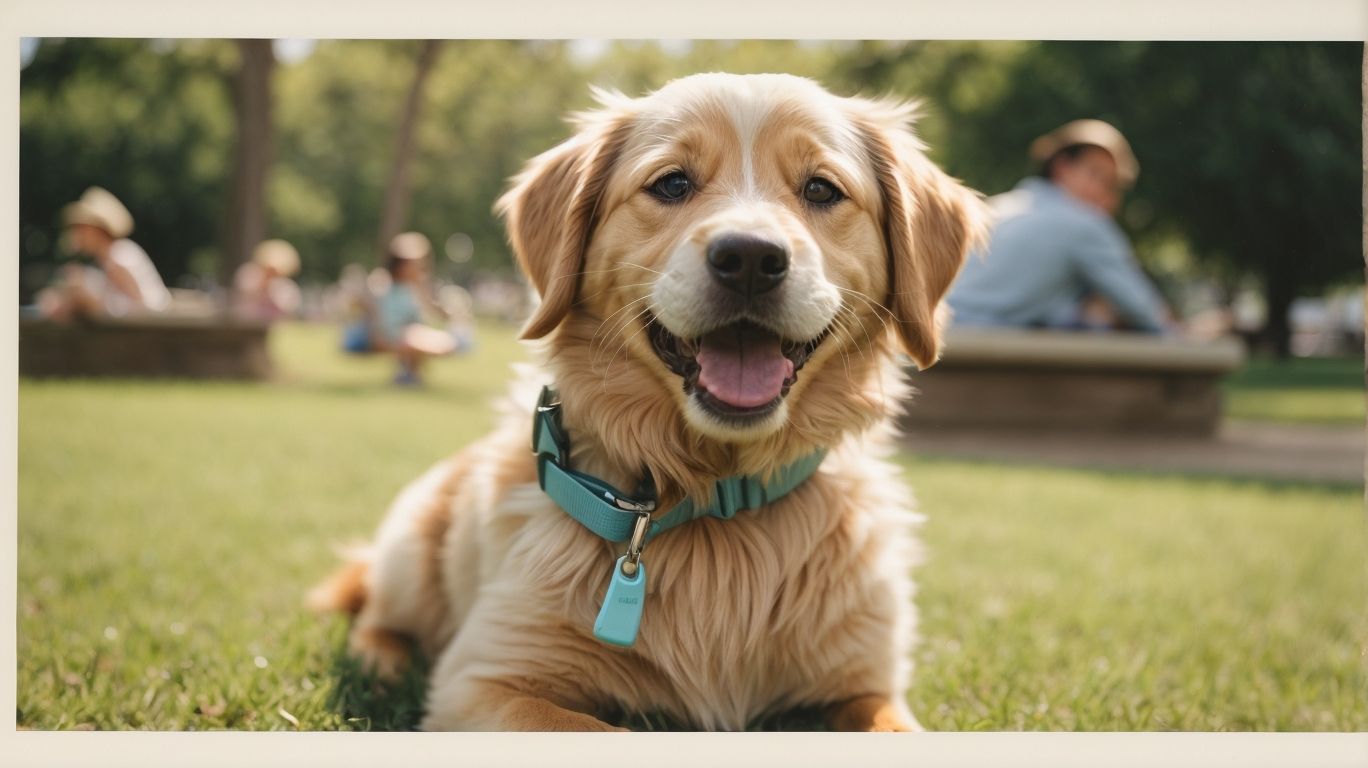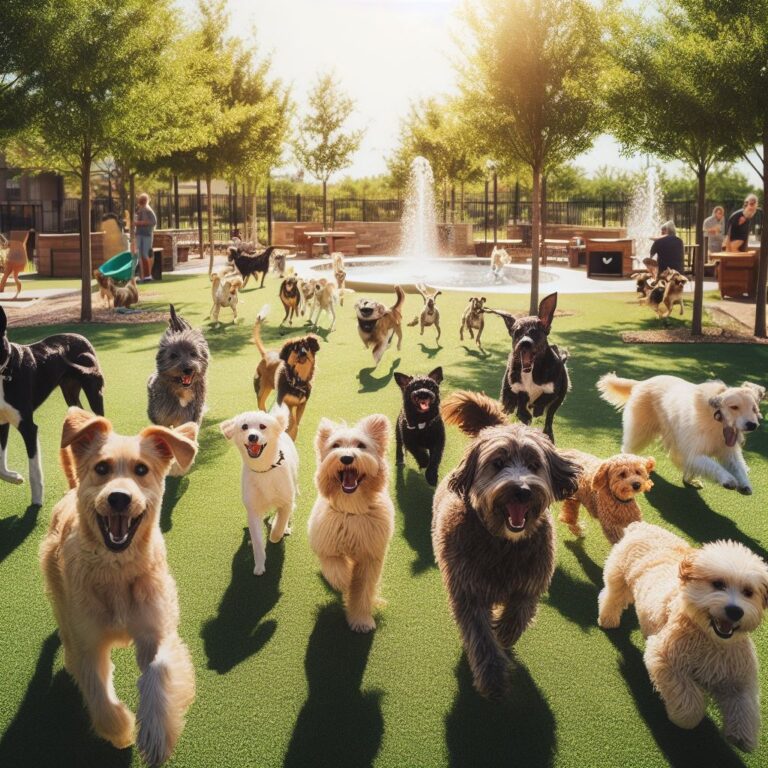Dog Park Levis
- Dog Park Philadelphia - February 28, 2024
- Dog Park San Antonio - February 27, 2024
- Dog Park Indianapolis - February 26, 2024
Heading 1: The Benefits of Visiting a Dog Park
A trip to the dog park can offer numerous benefits for both dogs and their owners. Firstly, it provides an opportunity for dogs to socialize with other canines in a controlled environment. This interaction helps in developing their social skills and reducing any behavioral problems that may arise from isolation. Moreover, the dog park gives dogs the chance to exercise and release their pent-up energy. With ample space to run, play, and explore, dogs can maintain a healthy weight and improve their overall fitness. Additionally, regular visits to the dog park can enhance the bond between pet and owner, as it allows for quality time spent together in a fun and enjoyable setting.
Furthermore, the dog park offers a sense of community for dog owners. It becomes a gathering place where people who share a love for their furry companions can meet and connect. The shared experience of working towards the well-being of their pets creates a sense of camaraderie and fosters new friendships. Additionally, dog parks often organize special events and activities, such as training sessions or charity drives, which can bring the community even closer together. Overall, visiting a dog park not only benefits the physical and mental health of the dogs but also contributes to a stronger sense of belonging for their owners.
Heading 2: Location and Facilities
Location and Facilities:
One of the key factors to consider when planning a visit to a dog park is the location and the facilities it offers. The ideal dog park should be conveniently situated, easily accessible, and have ample parking space. This ensures that dog owners can easily transport their furry friends and enjoy a stress-free outing. Additionally, a well-located dog park allows for easy integration into a daily routine, making regular visits more feasible.
When it comes to facilities, a good dog park should offer a safe and secure enclosed area for dogs to roam and play freely. This includes sturdy fencing around the perimeter, preventing any potential escapes and ensuring the dogs’ safety. It is also beneficial to have separate areas for small and large dogs, as this allows for a controlled and comfortable environment for all canines. Adequate seating and shade areas for dog owners to relax while supervising their pets is another important feature to consider. Lastly, having facilities such as water stations, waste disposal units, and even agility equipment can enhance the overall experience at the dog park, making it a welcoming and stimulating space for both dogs and their owners.
Heading 2: Rules and Regulations for Visitors
When visiting a dog park, it is important for visitors to familiarize themselves with the rules and regulations that govern the facility. These rules are put in place to ensure the safety and enjoyment of both dogs and their owners. One common rule is to keep dogs on a leash before entering and exiting the park, as this prevents any potential conflicts or accidents with other dogs. Additionally, most dog parks require visitors to clean up after their dogs, so bringing along waste bags is essential. By adhering to these rules, visitors can contribute to a positive and respectful environment for everyone at the dog park.
Another important regulation to keep in mind is to closely supervise dogs at all times while inside the park. This helps prevent any aggressive or unruly behavior that may arise from dogs that are not closely monitored. Dog owners should also be cautious not to bring any toys or treats that could provoke fights or disputes among the dogs. Lastly, it is crucial to ensure that dogs are up to date on their vaccinations, as many parks require proof of vaccination to protect the health of all dogs in the park. By following these rules and regulations, visitors can help maintain a safe and enjoyable experience for everyone involved in the dog park.
Heading 2: Socialization and Exercise Opportunities
Socialization and exercise are two key benefits of visiting a dog park. These parks provide a safe and controlled environment for dogs to interact with other canines and learn essential social skills. In an off-leash setting, dogs have the opportunity to engage in natural behaviors such as running, playing, and wrestling with their furry friends. This not only helps them burn off excess energy but also promotes physical fitness and overall well-being. Furthermore, regular visits to the dog park can help prevent behavioral problems, as dogs who are properly socialized tend to be more confident, relaxed, and less prone to aggression or anxiety in various social situations.
Additionally, dog parks offer a range of exercise opportunities for both dogs and their owners. While dogs can enjoy off-leash romping and exploring the open space, owners can partake in activities such as walking or jogging alongside their canine companions. This shared exercise routine not only strengthens the bond between dogs and their owners but also helps to maintain a healthy lifestyle for both parties. Moreover, the interactive nature of dog parks allows for owners to engage and bond with other dog lovers, creating a sense of community and friendship among like-minded individuals.
Heading 2: Safety Measures for Dogs and Owners
When visiting a dog park, it is important to prioritize the safety of both dogs and owners. One essential safety measure is to ensure that all dogs are fully vaccinated and up-to-date on their shots. This helps prevent the spread of diseases and keeps all pups healthy while enjoying their time at the park. Additionally, it is crucial for owners to supervise their dogs at all times, as this helps prevent any potential incidents or altercations between dogs. By keeping a close eye on their furry friends, owners can quickly intervene if any signs of aggression or inappropriate behavior arise, ensuring a safe and peaceful environment for everyone.
Another safety measure that should be followed is keeping dogs on a leash when entering or exiting the park. This helps prevent any incidents with other dogs already inside the park and ensures that no dogs run off and get lost or injured. It’s also important to have a leash ready in case a dog becomes overly excited or starts displaying aggressive behavior. By having control over the dog’s movements, owners can quickly and effectively manage any potentially dangerous situations before they escalate. Overall, practicing these safety measures not only ensures the well-being of dogs and their owners but also fosters a positive and enjoyable experience for everyone at the dog park.
Heading 2: Tips for a Successful Visit to the Dog Park
Before heading to the dog park, it is important to understand the basic tips for a successful visit. Firstly, it is crucial to ensure that your dog is well-behaved and obedient. This means that they should respond to basic commands such as sit, stay, and come. By having control over your dog’s behavior, you can prevent any potential conflicts or accidents with other dogs at the park.
Secondly, it is a good idea to bring some essential items with you. These may include poop bags, water for both you and your dog, and some treats or toys to keep your furry friend entertained. Additionally, it is recommended to have a leash handy, even if the park is leash-free. This will allow you to quickly regain control of your dog if necessary. By preparing these items in advance, you can ensure a smooth and enjoyable outing for both you and your canine companion at the dog park.
Heading 2: Common Behavioral Issues and How to Handle Them
Common behavioral issues can arise when dogs are brought together in a dog park environment. One of the most common issues is excessive barking, which can be triggered by excitement, anxiety, or even frustration. To address this, it’s important for dog owners to remain calm and redirect their dog’s attention to other activities or toys. Another common behavioral issue is resource guarding, where dogs become possessive over toys, food, or even their owners. In such cases, it’s crucial for owners to establish clear boundaries and provide proper training to discourage this behavior.
Aggression is yet another behavioral issue that may occur at the dog park. It is important for owners to be vigilant and closely monitor their dog’s interactions, especially if their dog displays signs of aggression such as growling, snarling, or stiff body language. In such cases, it’s best to remove the dog from the situation to prevent any potential incidents. Dog owners should also be aware of the signs of fear or anxiety displayed by their dogs, as these emotions can lead to reactive behavior such as snapping or cowering. Providing positive reinforcement and gradually exposing anxious dogs to new experiences can help them overcome their fears and build confidence.
Heading 2: Understanding Dog Park Etiquette
Understanding Dog Park Etiquette
When visiting a dog park, it is important to be mindful of the etiquette to ensure the safety and enjoyment of all park visitors. Firstly, always keep a close eye on your dog and be prepared to intervene if any conflicts arise. It is your responsibility to monitor your dog’s behavior and step in if they become aggressive or overwhelmed. Additionally, be respectful of other visitors and their dogs by keeping your dog on a leash until you enter the designated off-leash area. This helps prevent any potential confrontations while allowing all dogs to enter and exit the park safely.
Alongside monitoring your own dog, it is crucial to be aware of other dogs’ body language and behaviors. If you notice a dog displaying signs of fear or discomfort, it is best to give them space and allow their owners to handle the situation. Additionally, avoid bringing toys or treats that could potentially instigate conflicts between dogs. The goal is to create a harmonious environment where all dogs can socialize and exercise without unnecessary stress or tension. By being respectful and considerate of the other park visitors, everyone can have a positive experience at the dog park.
Heading 2: Health and Hygiene Practices at the Dog Park
Ensuring proper health and hygiene practices at the dog park is crucial for maintaining a safe and enjoyable environment for all visitors. Here are some important practices to keep in mind when visiting a dog park:
Firstly, it is essential to clean up after your dog. Most dog parks provide waste bags and trash cans for this purpose. Be responsible and promptly dispose of your dog’s waste in the designated areas. This not only keeps the park clean but also helps prevent the spread of diseases.
Additionally, it is recommended to keep your dog’s vaccinations up to date. Regular vaccinations protect your furry friend from potential illnesses that can be easily spread in crowded dog parks. Ensure your dog is protected against common diseases like rabies, distemper, and parvovirus. If your dog is on any medication, make sure to administer it as prescribed to maintain their overall health and prevent any potential transmission to other dogs.
Heading 2: Different Types of Dog Parks and Their Features
There are various types of dog parks available, each with its own unique features that cater to different needs and preferences. One type of dog park is the traditional, fully fenced park. These parks usually have ample space for dogs to run and play off-leash, along with amenities like water fountains, waste disposal stations, and resting benches for owners. These parks are ideal for energetic dogs that require plenty of room to roam and interact with other pups. Additionally, some traditional dog parks may have separate areas for small and large dogs to ensure safety and compatibility.
Another type of dog park gaining popularity is the nature park. These parks typically encompass large areas of natural landscape, such as forests or meadows, where dogs can explore and enjoy a more wilderness-like experience. Nature parks often boast walking trails, access to bodies of water like lakes or rivers, and lush greenery. Such parks provide a serene and refreshing environment for both dogs and their owners, making them a great choice for those seeking a peaceful escape or a more adventurous outing with their furry companions.
What are the benefits of visiting a dog park?
Visiting a dog park provides numerous benefits for both dogs and their owners. It allows dogs to socialize, exercise, and burn off excess energy. It also provides an opportunity for owners to meet other dog owners and exchange information and advice.
What should I consider when choosing a dog park?
When choosing a dog park, consider its location and facilities. Look for a park that is conveniently located and has adequate parking. Facilities such as fenced areas, water stations, and waste disposal stations are also important.
What are the rules and regulations for visitors at a dog park?
Each dog park may have its own set of rules and regulations, but some common ones include keeping your dog on a leash until inside the designated off-leash area, cleaning up after your dog, and monitoring your dog’s behavior to prevent any aggression or territorial issues.
How can visiting a dog park help with socialization and exercise opportunities?
Dog parks provide a controlled environment where dogs can interact with other dogs and people. This helps them develop social skills and learn appropriate behavior. Additionally, the open space and various obstacles in a dog park offer opportunities for exercise and mental stimulation.
What safety measures should I take for my dog and myself at the dog park?
It is important to ensure that your dog is up-to-date on vaccinations and has a proper ID tag. Always supervise your dog while at the park and be aware of any potential hazards. It is also recommended to carry a first aid kit and have a plan in case of emergencies.
Any tips for a successful visit to the dog park?
Some tips for a successful visit to the dog park include bringing water for your dog, bringing toys or treats for positive reinforcement, and being attentive to your dog’s behavior and body language. It is also advisable to start with short visits to assess your dog’s comfort level.
How can I handle common behavioral issues that may arise at a dog park?
If common behavioral issues such as excessive barking, resource guarding, or leash aggression arise, it is important to address them promptly. Consulting with a professional dog trainer or behaviorist can provide guidance and techniques to address these issues.
What should I know about dog park etiquette?
Dog park etiquette includes cleaning up after your dog, being aware of your dog’s behavior and intervening if necessary, and respecting other dog owners. It is important to follow the park’s rules and be considerate of other dogs and their owners.
Are there any health and hygiene practices I should follow at the dog park?
Yes, it is important to ensure that your dog is healthy and up-to-date on vaccinations before visiting a dog park. Regularly check your dog for any signs of illness or parasites. It is also essential to clean up after your dog and dispose of waste properly.
What are the different types of dog parks and their features?
There are various types of dog parks, including basic dog parks with open spaces and limited facilities, themed dog parks with specific features like agility equipment or splash pads, and private dog parks that require memberships. Each type offers different amenities, so choose one that suits your dog’s needs and preferences.




